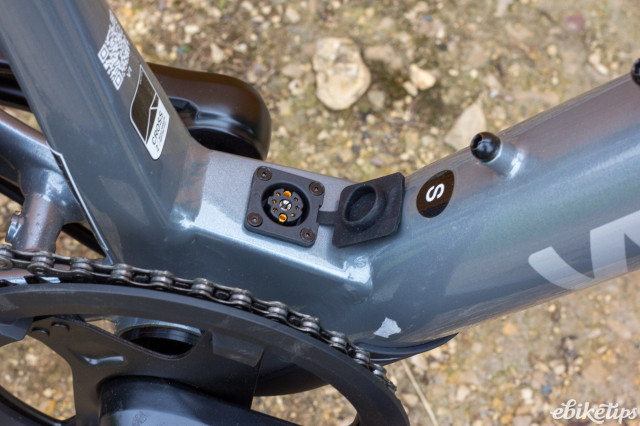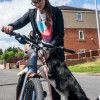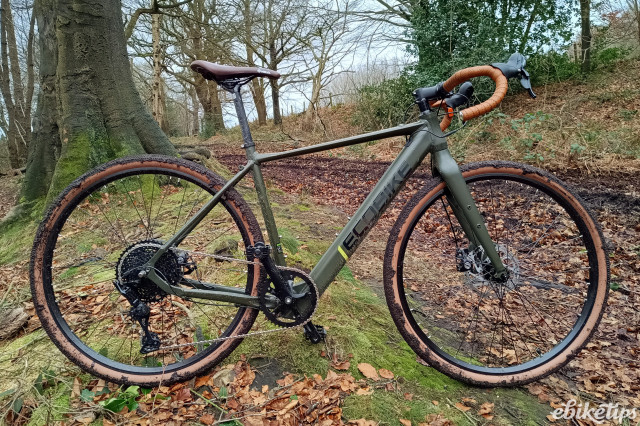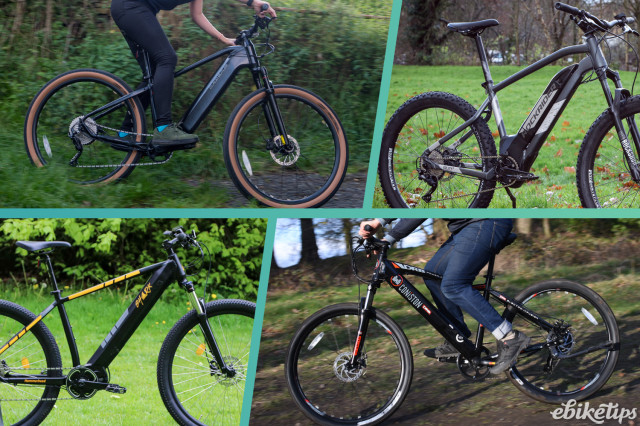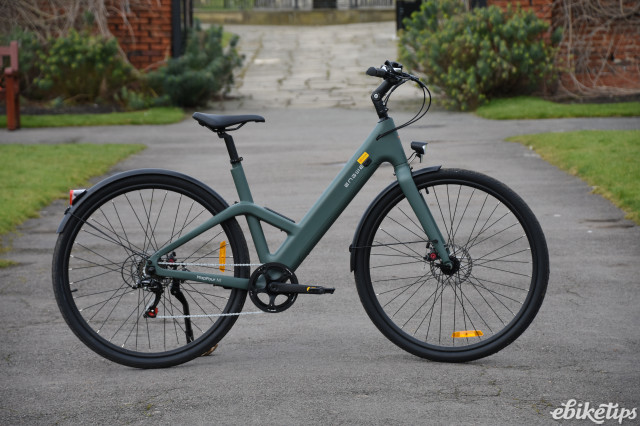The global electric bike market is projected to grow by up to 10% between 2022 and 2030, with urban and city e-bikes making up the vast majority of this growth. So in a market that’s already so heavily saturated with everything from sub-£1,000 hub motor offerings to premium, £5,000+ works of art, how can brands make their urban e-bikes stand out? Well according to Whyte (yes, the Whyte that’s well-known for its impressive mountain bike range) it’s simply about putting the customer first.
Whyte's RHeO range, launched earlier this year, has been one of the first in the UK to use the KMC-owned Kynamic drive system. Alongside this, the frame makes use of the brand’s mountain bike knowledge and adapts it to suit the urban rider.
We spoke to marketing director Matt Skinner and chief designer Ian Alexander about RHeO and the brand's return to the urban market on a sunny day at the Forest of Dean, where they were busy launching the broader Whyte 2025 range.
Dynamic Kynamic
We recently reviewed the Whyte RHeO, and were impressed with just how smooth and unintrusive the drive system is. KMC, a brand best known for its chains, is the group behind the Kynamic system – but in the case of the RHeO, Alexander and Whyte worked closely with them to make sure it was up to the task of surviving the British weather.
“They sent us some initial early systems, and I just literally lashed the battery onto the outside of a conventional bike, fitted it all up externally, connectors and everything, and rode it through a British winter.
“And we just kept feeding back to them. So, things like the replaceable freehub body; having the core of the motor being able to be removed and serviced and swapped without having to disassemble an entire wheel; and trying to make sure the charge port IPX rating was higher.”
Working closely with a motor manufacturer to get the system to perform exactly as you need it isn’t something every brand does – unless, of course, they have their own in-house options to tinker with. But for Whyte going outside of the usual Bosch systems was an inherent risk, so reliability and performance were key reasons to choose Kynamic over anything else - as Skinner explained.
“We knew from a price point of view, a mid-motor system wasn’t going to work. We wanted this to be affordable, and we wanted it to be something that people could consider as a commuter or transport purchase. We also didn't want the friction that typically can come with a mid-drive motor system as well.
“Hub drive just made sense. Obviously, Bosch don't make a hub system, otherwise they would be the first port of call. We also worked really closely with Kynamic to get an exclusive warranty - so we've got a longer warranty for our system on our bikes, to give both the trade, but also the customer, that peace of mind that you know if something goes wrong, we're covering it, and we’ve got your back.”
Standing on the shoulders of giants... or perhaps more accurately, Whyte
The RHeO ‘brand’ might be relatively new, but it’s based on a decade’s worth of experience in the urban sector already. If you’re a longtime fan of Whyte, you may remember models like the Stirling and the Portobello. They also offered a contemporary approach to urban bike design, but the RHeO brings it up to date, and utilises a lighter hub motor compared to previous Shimano STEPS systems.
“RHeO as a platform sort of stands on the shoulders of our previous 15 years of doing our urban bikes,” continued Alexander. “The philosophy of those bikes was really to try and marry up the best, most contemporary mountain bike geometry ideas at that time with the latest technology.”
“So RHeO is the point where we take that philosophy and then add in a lightweight hub motor system. We use quite long frame reaches, so we can use short 60mm stems on all frame sizes.
“We run a short-offset fork to generate more trail, so the bike sort of self stabilises and stays super stable on rough terrain. And by making a long reach, you make the front of the bike longer, and that means we can offset the down tube a little bit further forward, lower the battery, and just offset some of the rearward weight distribution that you get with the hub motor, because they're heavy on the rear wheel.”
Combining all these things helps to create a more centralised, stable bike but without compromising on agility or handling. What it does mean is that Whyte isn’t using old-school ‘trekking bike’ geometry, which Alexander says, “is barely good enough for acoustic bikes, but when you're adding in this extra weight, we think that you've got to apply a bit more contemporary geometry to it.”
Sleek, subtle style
Whyte has ended up with a pretty simple and sleek looking e-bike that doesn’t obviously feature a motor and battery at first glance. That was also part of the design thought process, as Skinner explained.
“The RHeOs don’t actually look like e-bikes. So, from a security point of view, you're not necessarily as worried about locking it up on the street. We wanted that to give you peace of mind, and to make the bike lightweight so it can be transported easily.
“We also wanted to ensure that you've got the confidence and the comfort to ride happily around with it, on cobble streets or gravel. Because you can ride on gravel or towpaths and the like happily enough.”
Whyte has made no secret about rejigging its priorities and reducing its portfolio to focus on primary markets. And thankfully for us e-bikers, the RHeO is here to stay. Apparently we can even expect a range extender to hit the market soon too.


